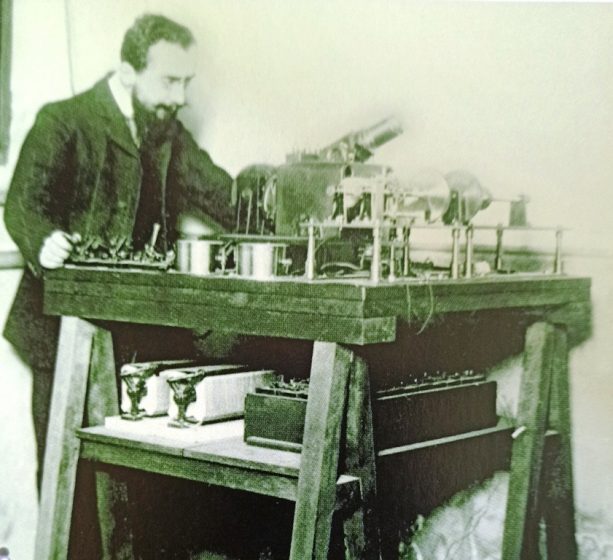Page Contents
When Was Fax Machine Invented?
From the mid-19th century, inventors had been working on ways of transmitting words and images down the telegraph or the telephone wires. The German physicist Arthur Korn is generally considered to be the inventor of the facsimile, or fax, the machine, but it was the Frenchman Édouard Belin who popularized the technology of Fax Machine (Instant Remote Communication).
History was made on 17 October 1906, when the German physicist and mathematician Arthur Korn (1870-1945) became the first person to transmit an image across a telegraphic network. Arthur Korn sent a photograph of Crown Prince Wilhelm from his laboratory in Berlin to the offices of the French magazine L’Illustration in Paris. A distance of somewhere 1,800 kilometers (1,100 miles)!
A year later, it was the turn of staff at the Daily Mirror to be amazed, when a photo of King Edward VII was wired from Berlin to their newsroom. The newspaper eagerly embraced the new technology and by 1909 was using an improved ‘telectograph’ system to send pictures from Paris to London and also from Manchester to London.

Clockwork and Chemicals
The inventor Alexander Bain patented the first device capable of sending a text document via a telegraphic network in 1843. His device used clockwork to synchronizes the motion of two pendulums for line-by-line scanning of the original.
Three years later he filed another patent, this time for a chemical telegraph that could reproduce a transmitted image on moving paper tape impregnated with a mixture of ammonium nitrate and potassium ferrocyanide. These chemicals produced blue marks when an electric current was passed through the tape.
The fact that Bain’s device involved fewer mechanical parts made it faster than transmission by Morse code, which by then was commonplace; it could send 282 words a minute compared to 40 by Morse.
The Pantelegraph
One of the main problems that Bedevilled Bain’s prototype fax machine was the near-impossibility of synchronizing the transmitter and the receiver. Giovanni Caselli (1815-91), Professor of Physics at the University of Siena, came up with a neat solution in his Pantelegraph of 1863.
It involved synchronized pendulums that were regulated by electric pulses from electromagnets at either side of the pendulum’s swing. They thus worked independently of the current for the telegraphic apparatus, which was susceptible to atmospheric conditions. A Pantelegraph service operated between London and Liverpool but was withdrawn following an economic crisis in 1864.
A Brilliant Idea of Fax Machine Invented
In 1843 the Scottish clockmaker Alexander Bain patented a rudimentary prototype facsimile transmitter based on a pendulum apparatus. But unlike this and subsequent inventions that built upon it, such as Giovanni Caselli’s Pantelegraph of 1863, Korn’s Telautograph broke new ground in operating electrically rather than mechanically.
Since 1902 Arthur Korn had been investigating the photoelectric properties of selenium cells, which were light-sensitive. A photographic negative of the original document was wrapped around a transparent glass cylinder. Which were rotated; as it did so? The selenium cells read the document by scanning the light and dark areas of the image.
These were then converted into electrical impulses and transmitted down a telegraph or telephone line to a synchronized receiver. Selenium cells in the receiver device reconstructed the image on a sheet of paper specially treated with photosensitive chemicals.
Although it was slow and yielded poor- quality results by modern standards, in essence, Korn’s invention was the world’s the first genuine fax machine. It enjoyed some success, being adopted by the police, meteorologists, the military and newspapers. The one major drawback was transmission time: the small photo he sent to Paris in 1906, for example, took around half an hour to arrive.

Enter the Belino
By the eve of the First World War, Bain and Korn’s devices had been superseded by the Belinograph – “Belino’ for short. Named after its inventor, the Frenchman Edouard Belin, it is widely regarded as the true antecedent of fax machines and photocopiers as we know them today.
In place of Korn’s selenium cells, Belin’s machine measured light intensity by means of an electric eye or photoelectric cell. The document to be transmitted was still rolled onto a cylinder and scanned line by line. But at the receiving end, the elements that made up the image were reproduced on photographic paper on a cylinder installed in a darkroom.

The Belino proved more accurate than earlier inventions at reproducing the various greyscale tones in monochrome photographs. It was also faster than its predecessors and rivals, taking just12 minutes to transmit an image measuring 130 x 180mm.
Belin constantly improved his invention, crucially making it portable. It sent the first Remote photo news story from the Great War and in 1933 was used by press agencies to set up the first international photo-wiring service, between London, Berlin, and Paris. Belin also improved the process in 1921 so that it was able to transmit images by radio waves.

Spreading the Word
The first public network of what came to be known as the fax (a contraction of the word ‘facsimile’) was established in the USA by Western Union in the 1930s. Nine years later, the Associated Press news agency set up the first private system.
Fax and photocopy quality improved as a result of technologies pioneered on computer printers (such as inkjets and lace printers), but it was 1987 before special heat. Sensitive fax paper was replaced by plain paper in a machine introduced by Canon. Machines combining printer, fax and photocopier are now commonplace.

Transmitting and receiving fax can be done from an ordinary PC via a standard telephone network. The Fax Machine Invented played a major role in the growth of an IT-literate society. Accepted by courts as legal evidence, it established itself throughout the business world and the civil service as the standard means of sending all forms of documentary proof of transactions and other communications.
Though the fax machine itself is now very much yesterday’s technology, the concept of transmitting data verbatim lives on in the practice of attaching PDFs or other documents to e-mails.

Product You May Interested
- Cat Spraying No More – How to Stop Your Cat from Peeing Outside the Litter Box – Permanently.
- High-Quality Dog Training Course Featuring 21 Games to Improve your Dog’s intelligence & Behavior with Professional Dog Trainer.
- Flavor Pairing Ritual Supercharges Women’s Metabolisms
- The best Keto Diet Program
- Boost Your Energy, Immune System, Sexual Function, Strength & Athletic Performance
- Find Luxury & Designer Goods, Handbags & Clothes at or Below Wholesale
- Learn How To Build A 3d Solar Panel Converts Like Crazy, and Save Lot of Money?
- Unlock your Hip Flexors, Gives you More Strength, Better Health and All-Day Energy.
Read More





